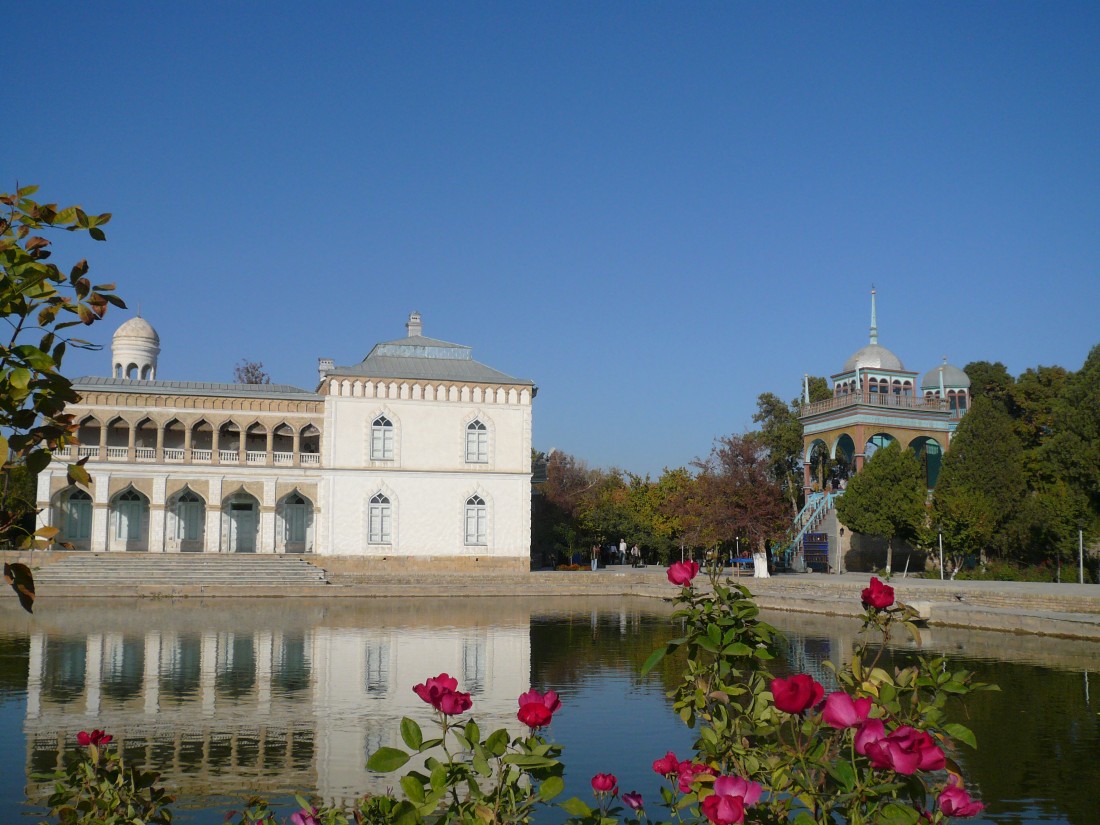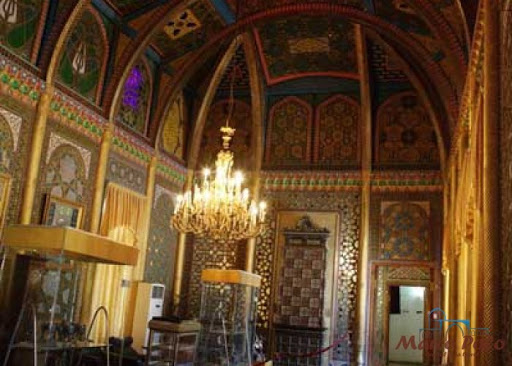Four kilometers north of Bukhara there is a palace of incredible beauty. At first glance, you can't tell whether it's an eastern emir, or a prince from the west. And all because the once progressive Bukhara prince from the Mangyt dynasty, Emir Said Alim Khan (1911-1920), lived in this palace.

A sad fate befell the Emir. With the advance of Russian troops on Bukhara, the emir was forced to flee the city to the Kingdom of Afghanistan, leaving his luxurious palace. There, having lost his sight, the emir died. And once the emir had everything – gold, which mysteriously disappeared, a royal life, numerous awards, wives and dozens of concubines and, of course, incredible mansions.
The residence of Sitorai Mohi-khosa is divided into two parts: the old one (in Oriental style) and the new one (in European style). The old palace was built in the XVIII century. The new complex was completed by Emir Said Alim Khan at the beginning of the XX century.
Not only the best architects of Bukhara, but also Russian architects were involved in the construction of the palace. Therefore, the appearance of the palace and its interior are so reminiscent of country residences in Russia and Europe. The palace is divided into a male and a female part.
The first thing that will meet you on the way to the Emir's palace is an ornate gate. The red-maroon decoration of the portal will surprise you, which was not at all typical for Central Asian architecture.
The name of the palace means "A star like the Moon", hence the moon-shaped shape of the building. In the middle of the residence there is a courtyard with a fountain. The microclimate of the courtyard is unusual-compared to the hot Bukhara, the air here seems to be transparent. The facade of the palace is decorated with relief ornaments; a balustrade with decorative vases runs along the edge of the roof. One of the sides of the building is a terrace (ayvan) with arched projections. The terrace is decorated with columns, and its decoration is made in delicate turquoise tones. One of the main entrances to the palace is guarded by two lions.

Once inside, the inner hall impresses with its luxury, beauty and decor. The painting, the combination of colors and the interior attract attention and it is already impossible to take your eyes off such decoration.
Among the inner chambers of the palace, there is a summer room with colorful windows, a dining room made of sliding walls, a reception room for ministers and a large white ceremonial hall with mirrored walls. The walls of the hall are covered with artistic modeling on ganch, which looks very noble. The incredibly beautiful rooms were made by Bukhara masters and decorators Usto Shirin Muradov and Hassan Jana. Each pattern represents the exclusive skill of the artist.
The decorative details of the palace are executed in the European and oriental styles of that time. In the rooms you can see the indescribable beauty of mirrors decorated in Venetian and Japanese styles; colorful stained glass windows and mosaics, numerous art objects, vases and sculptures, Bukhara carpets, majestic chandeliers and vintage furniture. Now numerous luxurious interior items are museum exhibits, and in the country residence of the emir has become a Museum of Decorative and Applied Arts.
Map
Working hours: 9:00 AM - 6:00 PM, Mon-Fri
For any questions
ПОЛЬЗОВАТЕЛЬСКОЕ СОГЛАШЕНИЕ
1. Определение
Настоящее Пользовательское соглашение (далее — Соглашение) является Публичной офертой в соответствии со статьёй 367 Гражданского кодекса Республики Узбекистан от 21.12.1995 (https://lex.uz/ru/docs/111181#162763) и регулирует порядок использования материалов и Сервисов сайта Государственного унитарного предприятия «Национальный PR-центр» (далее — Предприятие), размещённого на веб-сайте и поддоменах Национального Туристического Информационного Центра: https://uzbekistan.travel/ (далее — Сайт).
Посетитель и (или) Пользователь подтверждает, что ознакомлен, полностью и безоговорочно принимает все условия настоящего Соглашения и обязуется их соблюдать.
Использование Сайта Пользователем означает полное принятие данного Соглашения «как есть» в форме акцепта.
Соглашение вступает в силу с момента посещения любой страницы Сайта и (или) регистрации на Сайте и действует бессрочно во время пользования Сервисами Сайта.
Настоящее Соглашение обязательно для исполнения всеми Посетителями и Пользователями без каких-либо изъятий и дополнительных согласований.
Пользователь обязуется самостоятельно проверять актуальную редакцию Соглашения на Сайте перед использованием Сервисов.
2. Предмет Соглашения
Предметом настоящего Соглашения являются правила использования материалов Сайта и предоставление Посетителю и (или) Пользователю возможности использования Сервисов Сайта.
Предприятие является правообладателем исключительных прав на Сайт в целом и на его составные части, включая все виды контента: логотипы, товарные знаки, тексты, статьи, аннотации, иллюстрации, фотографии, графику, аудио- и видеофайлы, пользовательские интерфейсы, дизайн, структуру, программы, базы данных.
Я прочитал(а) и соглашаюсь с условиями использования сайта и политикой конфиденциальности.
